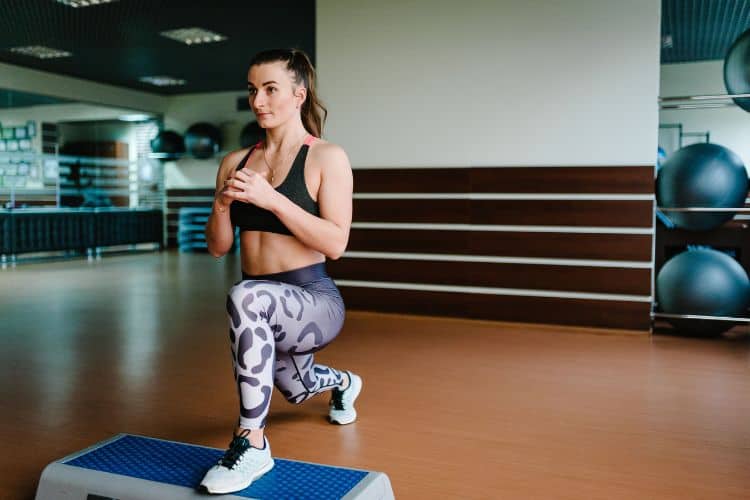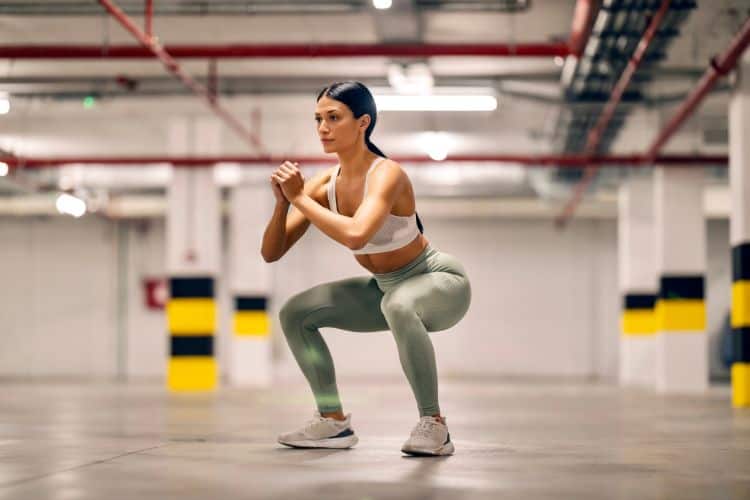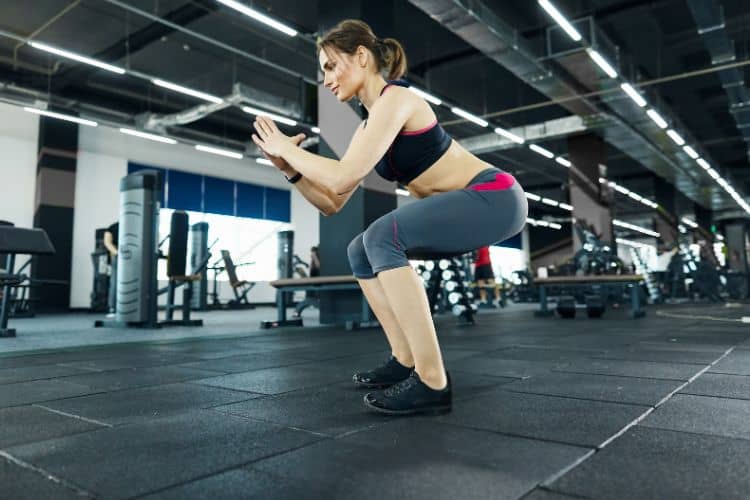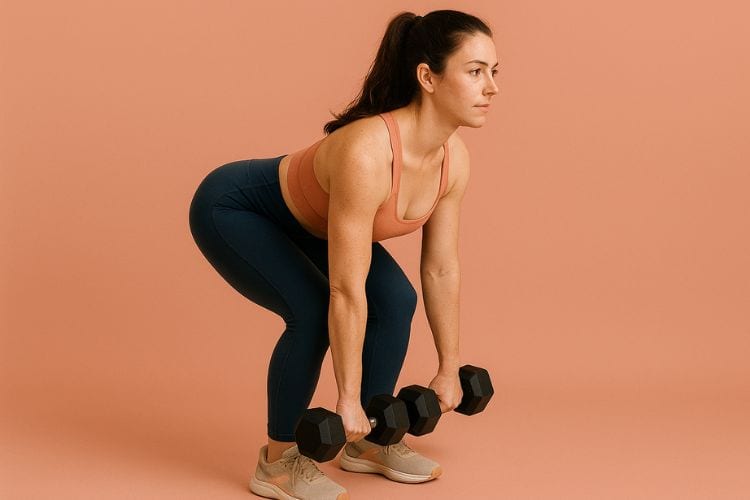Sign up for workout ideas, training advice, reviews of the latest gear and more.






If you want to build strength, burn calories, and sculpt lean muscle without spending hours in the gym, a 30-minute full-body dumbbell workout routine is your best bet. With just a pair of dumbbells and a bit of determination, you can target every major muscle group while keeping your heart rate high for fat loss. Whether you’re training at home or at the gym, this routine fits perfectly into a busy schedule and delivers powerful results.
One of the biggest advantages of this workout is that it’s short but effective. In just 30 minutes, you can engage all your major muscle groups — legs, core, back, chest, shoulders, and arms — through compound movements that maximize calorie burn and muscle activation.
Dumbbells allow for a greater range of motion and help develop balanced strength on both sides of the body. They’re also ideal for functional movements, improving your everyday strength and stability.
When you engage multiple muscles at once, your body continues to burn calories even after your workout ends — a phenomenon known as EPOC (Excess Post-Exercise Oxygen Consumption). This means your metabolism stays elevated for hours, helping you shed fat faster.
All you need is a set of dumbbells — adjustable or fixed-weight — and a small space. This makes it perfect for home workouts, hotel rooms, or quick gym sessions.
This full-body dumbbell routine is divided into three circuits. Each circuit focuses on different muscle groups while keeping your heart rate elevated. The structure looks like this:
Perform each circuit back-to-back with minimal rest between exercises. Rest for 60 seconds between circuits.
Before diving into your dumbbell routine, take 5 minutes to activate your muscles and increase blood flow. A good warm-up enhances performance and reduces the risk of injury.
Once you’re warm, grab your dumbbells and get ready to sweat.
This circuit targets your glutes, quads, hamstrings, and calves. Use moderate to heavy dumbbells that challenge you but allow for proper form.
Hold a dumbbell at your chest and perform deep squats. Keep your chest upright and engage your core as you drive through your heels to stand up.
Muscles Worked: Quads, glutes, hamstrings, core
Tip: Don’t let your knees cave inward; keep them aligned with your toes.
Hold a dumbbell in each hand, step one foot back, and lower into a lunge. Alternate legs.
Muscles Worked: Glutes, quads, hamstrings, calves
Tip: Maintain balance by keeping your front knee above your ankle.
Hold your dumbbells in front of your thighs. Hinge at your hips while keeping your back straight, and lower the dumbbells to mid-shin level before returning to standing.
Muscles Worked: Hamstrings, glutes, lower back
Tip: Push your hips back instead of bending your knees excessively.
Step onto a sturdy bench or chair while holding dumbbells. Drive through your front heel to lift your body.
Muscles Worked: Glutes, quads, hamstrings
Tip: Control the movement — avoid using momentum.
Hold dumbbells at your sides and rise onto your toes. Pause for a second at the top, then slowly lower back down.
Muscles Worked: Calves
Tip: Keep your movements controlled for maximum contraction.
Repeat Circuit 1 twice with a 30-second rest between sets.
This section focuses on building lean muscle in your chest, back, shoulders, and arms. Choose weights that allow you to perform each move with good form.
Bend at your hips, keep your back flat, and pull the dumbbells toward your waist. Squeeze your shoulder blades together at the top.
Muscles Worked: Lats, rhomboids, biceps
Tip: Avoid rounding your back.
Stand tall or sit on a bench. Press dumbbells overhead, then slowly lower them back to shoulder height.
Muscles Worked: Shoulders, triceps, upper chest
Tip: Keep your core tight and avoid arching your lower back.
Lie flat on a bench or floor with dumbbells in hand. Press them up above your chest, then lower them until your elbows are at 90 degrees.
Muscles Worked: Chest, shoulders, triceps
Tip: Exhale as you press the dumbbells upward.
Hold the dumbbells at your sides and curl them toward your shoulders. Slowly lower back down.
Muscles Worked: Biceps
Tip: Keep your elbows close to your torso.
Hinge at the hips with a flat back, elbows tucked close to your sides. Extend your arms back, then bring them forward slowly.
Muscles Worked: Triceps
Tip: Focus on slow, controlled movements for a good squeeze.
Repeat Circuit 2 twice with 30–45 seconds of rest between rounds.
Finish your session strong with this combination of core sculpting and conditioning moves. These exercises will elevate your heart rate while toning your abs and stabilizing muscles.
Sit on the floor, lean back slightly, and hold a dumbbell with both hands. Twist your torso from side to side.
Muscles Worked: Obliques, core
Tip: Keep your feet slightly off the ground for an added challenge.
Start in a plank position with hands gripping dumbbells. Row one dumbbell toward your waist, then switch sides.
Muscles Worked: Back, core, shoulders, arms
Tip: Keep your hips steady — avoid twisting your torso.
Hold dumbbells at shoulder level, perform a squat, and explosively press the dumbbells overhead as you stand.
Muscles Worked: Quads, glutes, shoulders, triceps, core
Tip: Use controlled power — this move blends strength and cardio.
Hold a dumbbell on your top hip while in a side plank position. Engage your obliques to stay stable.
Muscles Worked: Obliques, shoulders, glutes
Tip: Keep your body in a straight line from head to feet.
Lie on your back holding dumbbells above your chest. Lower one arm and the opposite leg toward the floor, then return to start.
Muscles Worked: Core, hip flexors, lower abs
Tip: Keep your back pressed into the mat.
Perform Circuit 3 once or twice, depending on your fitness level.
After this intense 30-minute session, spend a few minutes stretching to relax your muscles and improve flexibility.
This cooldown helps reduce soreness and speeds up recovery.
If you’re new to dumbbell training, start with lighter weights to master your form. Gradually increase the load as you get stronger. Ideally, the last two reps of each set should feel challenging but manageable.
Good form prevents injuries and ensures you target the correct muscles. Engage your core, avoid jerky movements, and focus on controlled reps.
Since this is a 30-minute full-body workout, limit rest between exercises to 20–30 seconds to keep your heart rate elevated and maximize calorie burn.
If you’re a beginner, reduce the number of rounds or choose lighter weights. If you’re advanced, add more sets or increase the tempo for a greater challenge.
Keep a workout log of your weights, reps, and rounds. Gradual progression leads to consistent improvement and visible results.
These compound movements mirror real-life actions — pushing, pulling, lifting, and squatting — improving daily performance and reducing injury risk.
Because you’re working all major muscle groups, you’ll notice balanced muscle tone throughout your body.
Combining strength and cardio moves makes this routine excellent for weight loss and boosting endurance.
Core engagement during most dumbbell exercises strengthens your midsection, promoting better posture and reducing back pain.
You can perform this routine anywhere — at home, at the gym, or even outdoors — making it easy to stay consistent.
If you want to integrate this 30-minute full-body dumbbell workout into your weekly routine, here’s a simple plan:
| Day | Workout |
|---|---|
| Monday | 30-Minute Full-Body Dumbbell Workout |
| Tuesday | Active Recovery (Yoga or Light Cardio) |
| Wednesday | 30-Minute Dumbbell Workout |
| Thursday | Rest or Mobility Training |
| Friday | 30-Minute Dumbbell Workout |
| Saturday | Optional Cardio or Core Focus |
| Sunday | Rest |
This schedule ensures proper recovery while maintaining consistency for results.
Fuel your body with lean proteins, complex carbs, and healthy fats. Post-workout meals should include protein and carbs to repair and replenish your muscles.
Drink water before, during, and after your workout to keep your energy levels stable and prevent dehydration.
Muscle repair happens when you rest. Aim for 7–9 hours of quality sleep every night to enhance performance and recovery.
Incorporate stretching or foam rolling on rest days to prevent stiffness and improve mobility.
A 30-minute full-body dumbbell workout is one of the most efficient and effective ways to improve your fitness. It builds strength, burns fat, and enhances endurance — all while fitting easily into your schedule. With consistent effort, proper nutrition, and recovery, you’ll notice improved muscle tone, better energy, and increased confidence in just a few weeks.
Whether your goal is weight loss, strength building, or overall fitness, this workout delivers. Grab your dumbbells, set your timer, and start transforming your body — one powerful rep at a time.
Stay up to date on the latest women’s health, fitness and lifestyle trends and tips.